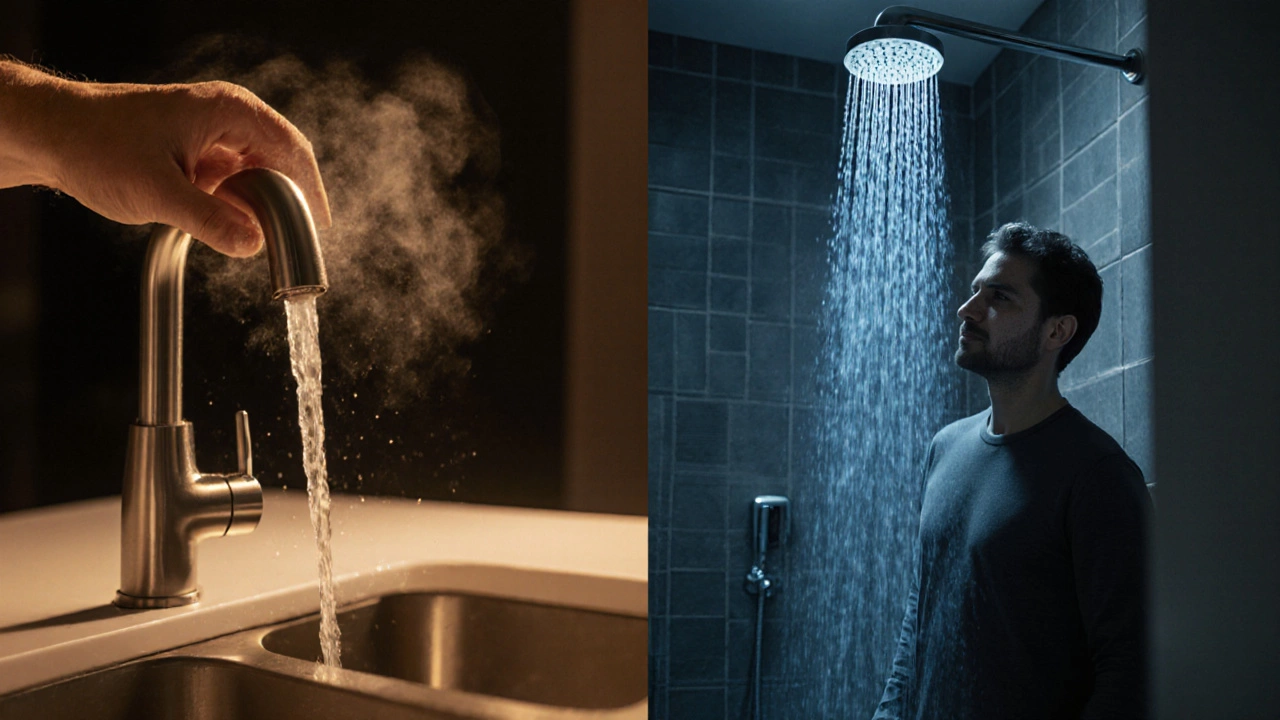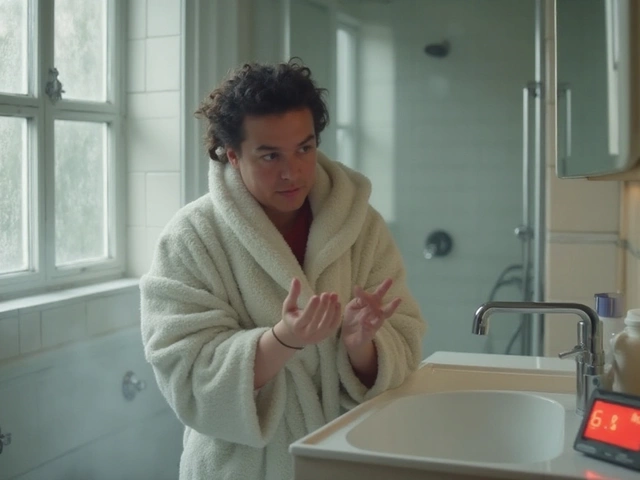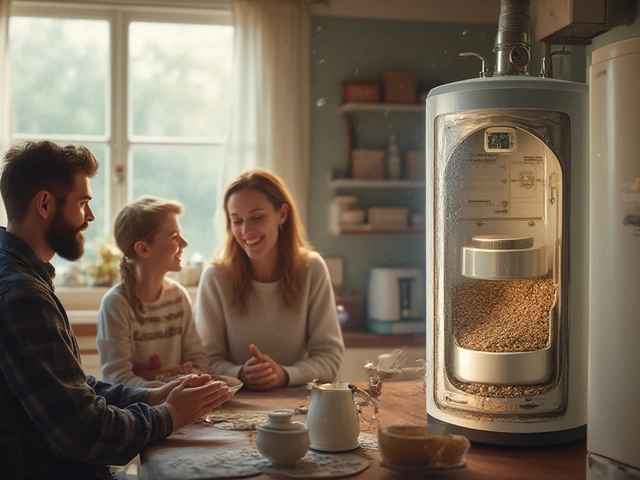Hot Water Diagnostic Tool
Identify Your Hot Water Problem
This tool will help you diagnose why hot water works at your kitchen sink but not at your shower. Answer the questions below to receive a personalized solution.
Imagine turning on your kitchen tap and feeling a blast of hot water, only to step into the shower and get a chilly surprise. It’s a frustrating puzzle that many homeowners face, and the answer often lies in a mix of plumbing quirks and heater settings. Below we break down why this happens, how to pinpoint the culprit, and what you can actually do yourself before calling in a professional.
What the Problem Really Is
Shower hot water problem is a condition where hot water flows freely from fixtures like the kitchen sink or bathtub but fails to reach the showerhead when demand spikes. In most cases the hot‑water supply itself isn’t broken; rather, something in the delivery path to the shower stalls the flow.
Common Culprits Explained
- Shower diverter is a valve that switches water between the tub spout and the showerhead. A stuck or corroded diverter can keep the hot water routed to the tub, leaving the shower dry.
- Thermostatic mixing valve (TMV) blends hot and cold to maintain a safe temperature. If the TMV is clogged or mis‑set, it may block hot water to the shower while still letting it pass to other fixtures.
- Cold water supply line can develop a blockage that creates a pressure imbalance, effectively forcing cold water to dominate at the shower.
- Hot water tank (or boiler) might be undersized for simultaneous demand. When the sink draws hot water, the tank can’t keep up, leaving the shower with only cold.
- Pressure‑balancing valve equalises pressure between hot and cold lines. A faulty valve can cause a drop in hot‑water pressure just when the shower is turned on.
- Piping blockage caused by scale or debris in the hot‑water line leading to the shower. The blockage may be invisible until the water tries to flow through the narrow section.
Step‑by‑Step Diagnosis
- Check the other fixtures. Run the kitchen tap and bathtub faucet. If they’re hot, the heater is likely fine.
- Test the diverter. Move the diverter knob or lever between tub and shower several times. Listen for a click and feel for hot water at the showerhead.
- Inspect the showerhead. Unscrew it and look for mineral buildup. A clogged showerhead can mimic a hot‑water problem.
- Feel the temperature at the faucet closest to the shower. If that faucet is also cold while the sink stays hot, suspect a pressure‑balancing valve or TMV.
- Check the hot‑water tank pressure. Locate the pressure gauge (usually on top of the tank). A reading below 1bar may indicate inadequate pressure for multiple fixtures.
- Look for signs of corrosion or leaks. Corroded pipes near the shower can restrict flow, especially in older UK homes with copper or galvanized steel.
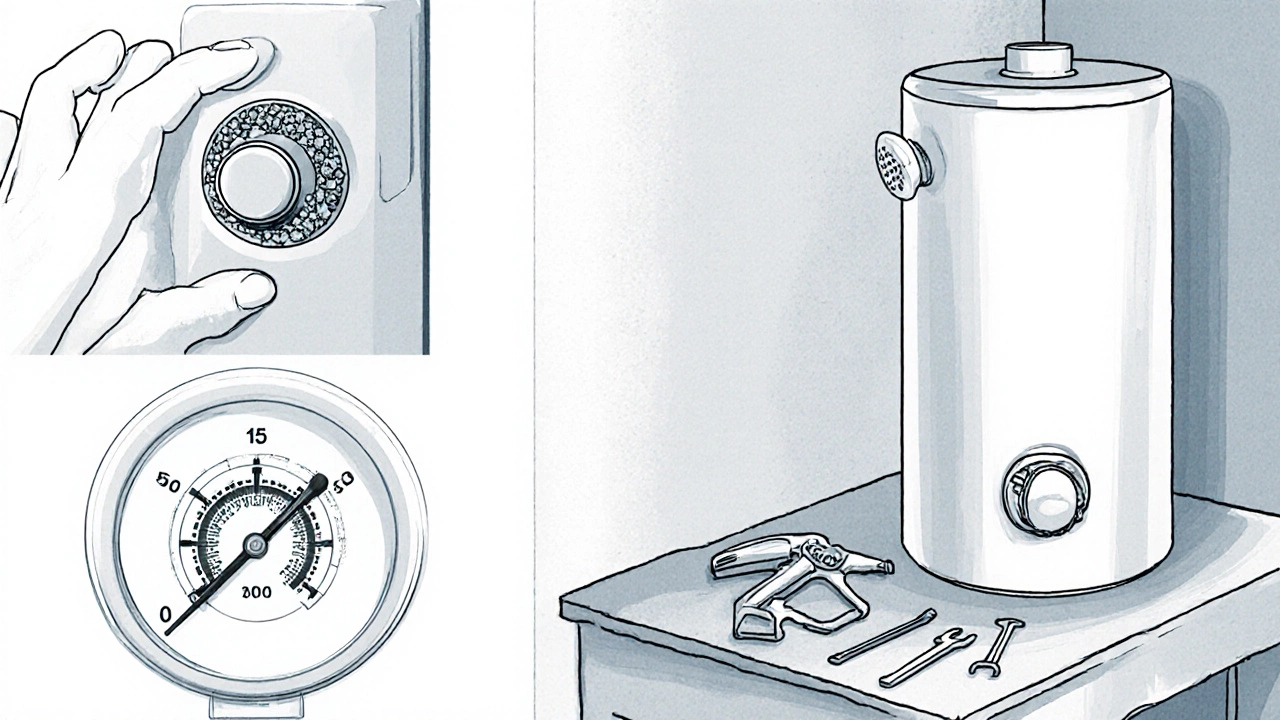
DIY Fixes You Can Try
- Clean the showerhead. Soak it in white vinegar for an hour, then scrub with a soft brush. Rinse and reinstall.
- Lubricate or replace the diverter. Apply plumber’s grease to the moving parts. If the diverter still sticks, swapping it out (typically $30‑$60) solves the issue.
- Flush the hot‑water lines. Turn off the cold water supply, open a hot faucet (like the kitchen sink) to relieve pressure, then disconnect the hot line near the shower and run water to clear sediment.
- Adjust or replace the TMV. Some thermostatic valves have a simple adjustment screw; turn it clockwise to allow more hot water. If the valve is old (over 10years), replacement is recommended.
- Inspect the pressure‑balancing valve. If you hear a whistling sound when the shower runs, the valve may be worn. Replacing it restores proper hot‑water pressure.
When to Call a Professional
If you’ve walked through the steps above and still end up with lukewarm water, it’s time to bring in a qualified plumber. Typical scenarios that need a pro include:
- Persistent low pressure despite a functioning tank and diverter.
- Visible corrosion or leaks in the hot‑water pipe run.
- Complex pipe layouts behind walls where a blockage might require a camera inspection.
- Older boiler systems that may need a pressure‑boost pump or a full‑service tune‑up.
Professional intervention usually starts at £80‑£120 for a site visit, plus labour and parts. Getting a quote before work begins helps avoid surprise costs.
Preventive Maintenance Tips
Keeping hot water flowing to every showerhead is easier when you stay ahead of the problem:
- Descale your showerhead and faucet aerators every 6‑12months.
- Check the water‑heater’s anode rod annually; a depleted rod can accelerate internal corrosion.
- Flush the hot‑water tank twice a year to remove sediment that reduces heat transfer.
- Install a water‑softener if you have hard water; it cuts down on scale buildup in valves and pipes.
- Test the diverter and TMV each spring; a quick tweak can save a costly replacement later.
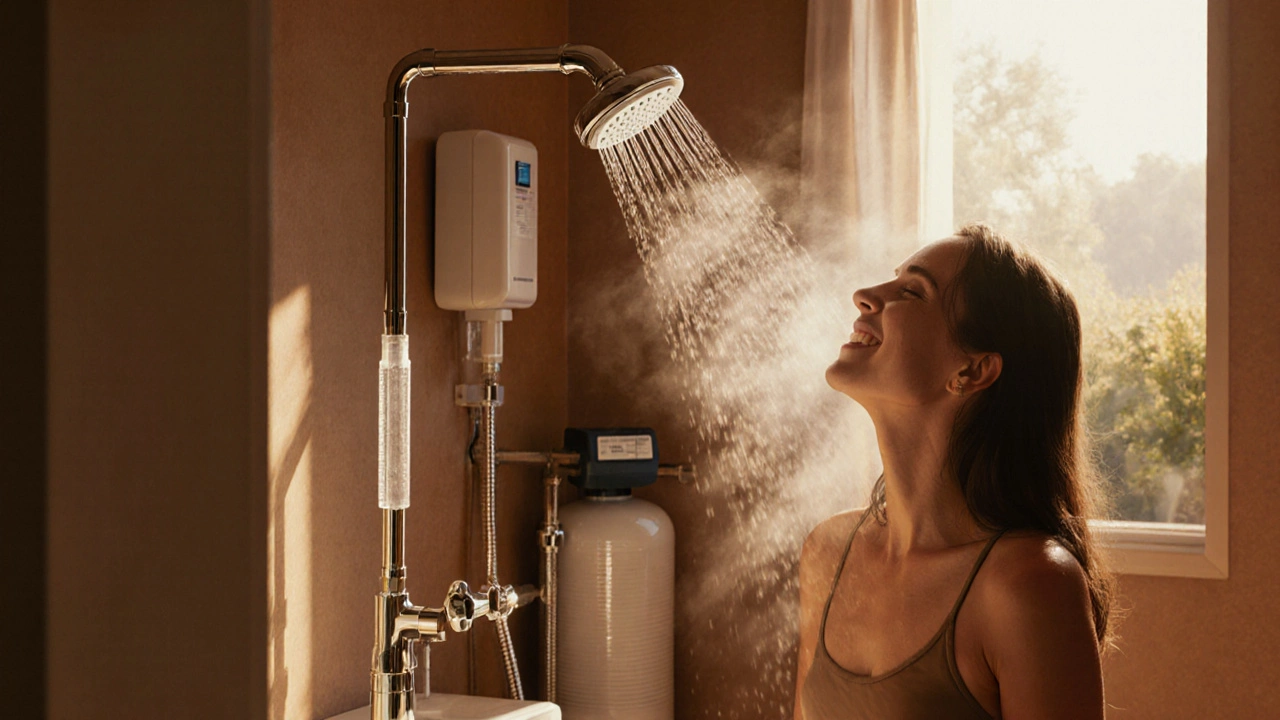
Quick Reference Table
| Cause | Typical Symptom | DIY Fix? | Estimated Cost (UK) |
|---|---|---|---|
| Stuck shower diverter | No hot water at shower, hot elsewhere | Yes (lubricate/replace) | £30‑£60 |
| Clogged showerhead | Weak flow, occasional cold spots | Yes (vinegar soak) | £0‑£10 |
| Faulty TMV | Shower stays cold despite hot taps | Partial (adjust); full replace often needed | £80‑£150 |
| Pressure‑balancing valve failure | Drop in hot pressure when other fixtures run | No - replace | £70‑£120 |
| Sediment blockage in hot pipe | Hot water reaches sink but not shower | Possible (flush lines) | £0‑£30 |
| Undersized hot‑water tank | Hot water depletes quickly under multiple demands | No - upgrade tank | £500‑£1,200 |
Bottom Line
If you’re plagued by hot water sink but not shower, start with the simplest checks: clean the showerhead, move the diverter, and feel the pressure at nearby taps. Most of the time a stuck diverter or a clogged valve is the culprit, and those fixes are cheap and quick. When the problem persists, a professional plumber can diagnose deeper issues like pipe blockages or boiler pressure faults, saving you wasted time and cold showers.
Frequently Asked Questions
Why does hot water work at the kitchen tap but not the shower?
The heater itself is likely fine. The issue usually lies in a diverter, mixing valve, or a blockage that affects only the shower’s hot‑water line.
Can I replace a shower diverter myself?
Yes, most diverters are removable with a screwdriver and a wrench. Turn off water, remove the old part, apply plumber’s grease, and install the new one. Cost is typically £30‑£60.
What is a thermostatic mixing valve and why does it matter?
A TMV blends hot and cold water to a preset safety temperature. If it gets clogged or its sensor drifts, it can block hot water from the shower while other fixtures stay hot.
Should I flush my hot‑water tank regularly?
Flushing twice a year removes sediment that reduces heating efficiency and can cause blockages in downstream pipes.
When is it worth replacing the whole water heater?
If the tank is over 10‑12 years old, shows rust inside, or can’t keep up with demand even after cleaning, a new, larger‑capacity heater will save energy and heat‑up time.

